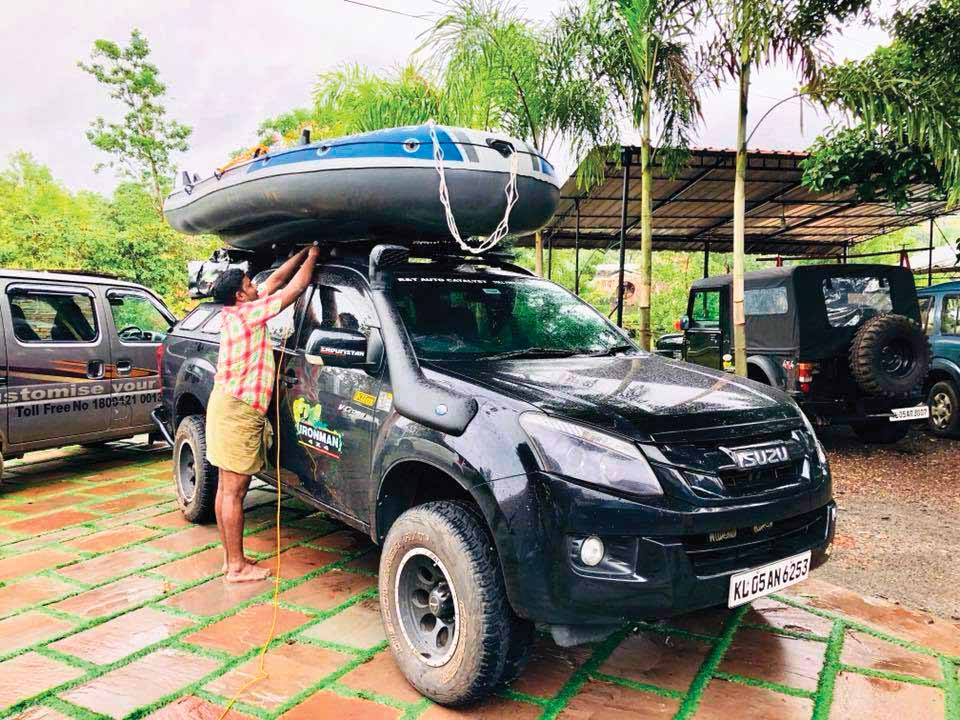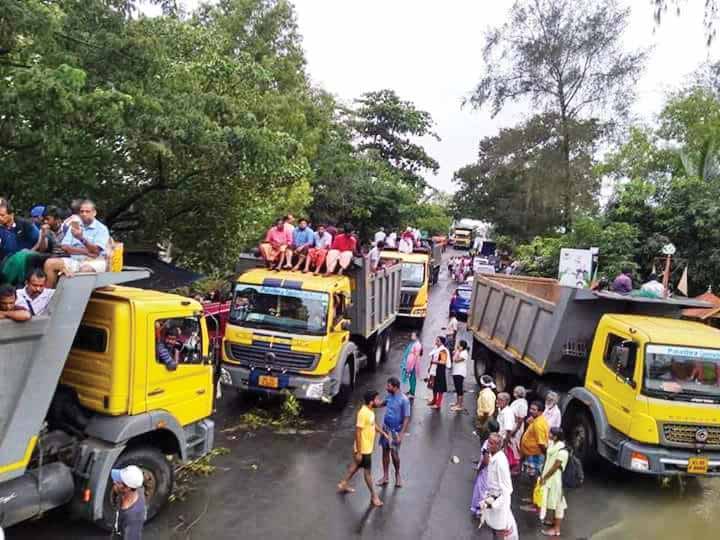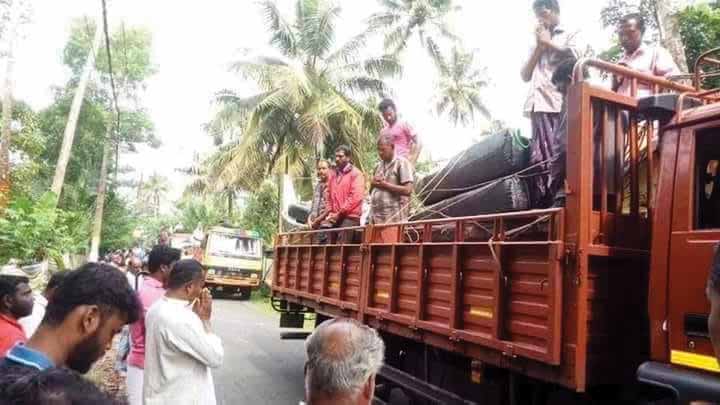CVs played a key role in the rescue and recovery operations in Kerala.
Story by:
Ashish Bhatia
Little did the people of Kerala think of the devastation the months of July and August 2018 would bring. As the first state in India to receive monsoon, Kerala, situated in a long and slender belt of land with the Sahyadri mountain range on one side, and the Arabian Sea on the other is green yet densely populated. Heavy rainfall is not new to the state. When heavy rains began in various parts of the state in the latter half of July, nobody came to think that in early August, the state would suffer a calamity unseen of, and unheard of in the recent past. Receiving an estimated 40 per cent more rains than the normal average, dams built into the Sahyadris began overflowing. As excess water was let off by opening the dam doors, the rivers flowing down the Sahyadri began rising. The form they assumed was such that, they simply triggered landslides, raised homes, uprooted trees and almost everything that came into their path to cause the worst flood in the recent history of Kerala.
With 35 out of the 42 dams in the state opening their gates as a result of receiving up to 12 inches of rain in 24 hours, by August 8, 2018, low lying areas in the state witnessed severe flooding. Sensing the need, the Government of Kerala reached out to the fishermen to help with the rescue operations. A story in this regards involves Kollam district collector S Karthikeyan and his counterpart in Pathanamthitta, P B Nooh. On August 15, 2018, P B Nooh called Karthikeyan to request five dinghies for rescue operations in flooded areas in his district. Unable to grant his request, Karthikeyan told Nooh that he could possibly arrange some fishermen’s crafts, and immediately called up some fishermen’s societies to ask if they could spare some small boats for rescue operations. No longer using the traditional small boats for fishing, the fishermen suggested sending slightly larger single-engine boats that they use. In the afternoon, some fishermen with two boats were sent to Pathanamthitta on a trial basis. As night fell, an SOS to Karthikeyan was sent to send more fishing boats as it were these boats that were able to do the rescue operation. The dinghies and rectangular boats of National Disaster Response Force (NDRF) were proving ineffective against the rising water level and currents in several areas along the Pampa river and its tributaries.
With the prospect of rivers flowing into towns, Karthikeyan immediately called an emergency meeting with office-bearers of various fishermen’s societies in the town and assured them that even a scratch on their boats would be taken care of by the government. The fishermen agreed, and the transportation of boats to Pathanamthitta turned out to be the next challenge. Mike announcement and phone calls from the Kollam collector’s office saw several trucks with their tank full gather at the Kollam port. One look at the images and videos that continue to populate the internet suggest that people don’t seem to get enough of seeing CVs in action during the food rescue and relief operations in the state. From CVs to long-haul trucks, to tippers, every CV almost, could be seen in action as they waded through water-logged and hard to reach remote locations. In a diverse spectrum of operations, the rugged nature of CVs ensured that they came to the aid of both people in rescue operations, and in reaching crucial supplies to the stranded. What started as a trickle turned into a stream. By the night of August 16, truckers helped transport 120 boats from Kollam. On hearing of this, places like Thiruvananthapuram and Ernakulam too started sending fishing crafts to Pathanamthitta on trucks. The trucks and truckers of Kerala thus played a key role in pulling off a near-impossible rescue operation across the state,
Undaunted of the damage the flood waters will cause, truckers ventured out to ply the Army trucks in the flood-hit regions of Kerala in August 2018. From August 16 to 18, traffic was often stopped on roads in Kerala to give way for big fleets of 10, 20, even 50 trucks loaded with boats from Kollam and Thiruvananthapuram as they rushed to the flooded areas of Pathanamthitta. Taking part in the rescue operation, fisherman Jacob John from the Kollam harbour, in an interview to a national newspaper mentioned that truck drivers took as much risk as fishermen, riding on flooded roads and bridges. For every boat that took part in the mission, there was a truck that carried it, he said. Cited Jacob that on stretches that were flooded, the wheels of trucks carrying the boats were completely submerged. To reach relief camps, the truckers were forced to change routes many times in the wake of the rising water levels. As per what Nooh estimated, of the people rescued in his district, 70 per cent were rescued by fishermen, 15 per cent by NDRF and forces, and 15 per cent by the locals.
Without bothering if the water would ruin their machines (and it did indeed in many cases), the truckers of Kerala, with fishing boats on board, travelled over flooded roads and the densely vegetated topography of the state as described by Air Marshal B Suresh, AOC-in-C Southern Air Command, for long distances in convoys that seemed never to end with their own money. A constant sight no matter where in the state one travelled, be it Ernakulam, Thrissur or Pathanamthitta district, truckers gave a free ride and did all that they could to help the people of their state to get to safety. Working with revenue authorities, police and disaster management team, truckers of Kerala, with water threatening to enter the cabin, set an example of humanity that needs to be recognised as much as the role the fishermen played in the flood rescue operations in Kerala. Of particular importance is the mention of tipper drivers and operators who participated in the flood rescue operations in the state. Their elevated body design was helpful in reaching places where people were stranded. The best part was, even water in excess of four-feet did not stop them from losing visibility to what they were striving to achieve. And, as the floods recessed, truckers played out by ferrying relief material from various parts of the country to Kerala to help it get back to its feet as soon as possible. CV magazine takes this opportunity to salute all those truckers who selflessly offered their services to mankind in the face of one of the worst natural calamities in the history of the country.

































